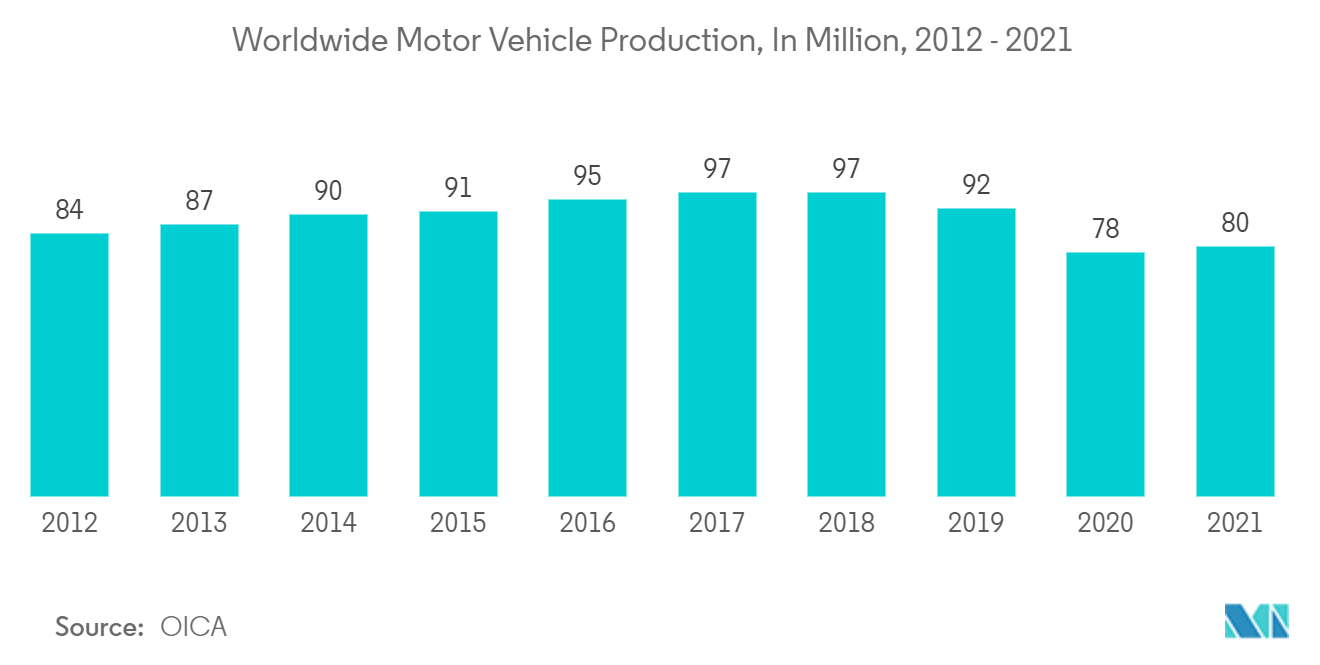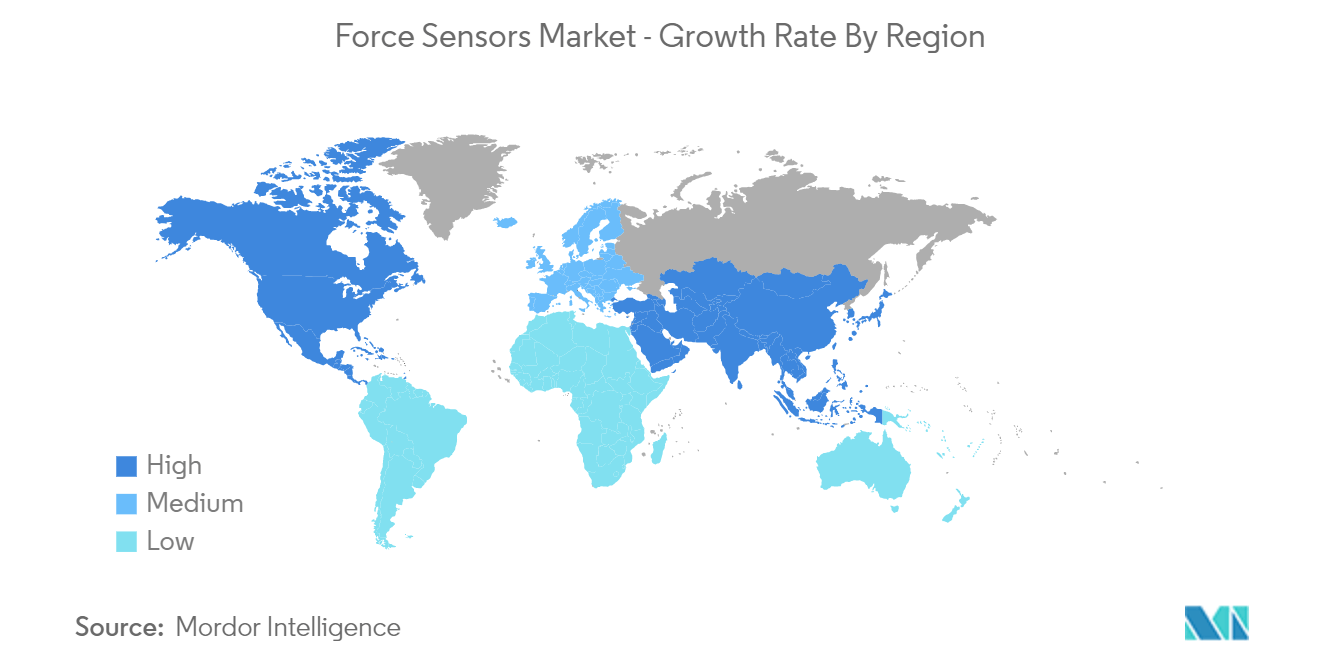Market Trends of Force Sensors Industry
This section covers the major market trends shaping the Force Sensors Market according to our research experts:
Automotive Sector is Expected to Register a Significant Growth
- The rising automotive sales and increasing production of vehicles globally are expected to create opportunities. According to the OICA (Organisation Internationale des Constructeurs Automobiles), the sales of automobiles in China in 2021 reached the highest at 26.08 million units. In 2021, around 80.14 million motor vehicles, including cars, and commercial vehicles, were produced globally.
- Furthermore, force sensors are commonly employed in the automotive sector to detect centripetal force during maneuvers to increase driver safety. They are also used in engine management systems (MAP/BAP) and oil pressure monitoring. Because of these advantages, the demand for force sensors in the automobile industry may expand in the coming years.
- The automotive industry has many new opportunities for force sensors in the Research and development of infotainment systems. In recent years, the automotive industry has emerged as an excellent source of demand for touchscreen units. Prominent automotive sensor manufacturers like Bosch, Denso, and Infineon Technologies are investing in technologically advanced, safer, and more secure sensor-based products for various automotive applications.
- Moreover, the increasing demand for technologically sophisticated functionalities in the automotive sector, where force sensors are used for driver safety, engine management systems, and oil pressure systems, is expected to increase demand for force sensors in the future years. Furthermore, the growing popularity of robotics and advancements in IIoT will propel the market.
- Additionally, the increasing safety regulations and rapidly rising adoption of advanced driver assistance systems (ADAS), which alert the driver based on several parameters, are expected to drive the demand for force sensors over the forecast period.
- However, the automotive industry has been impacted by the COVID-19 outbreak, as China is one of the major suppliers of raw materials and finished products. The sector faced a reduction in production, disruption in the supply chain, and price fluctuations. The prominent electronic companies' sales were affected but are expected to grow soon.

Asia-Pacific to Witness the Significant Growth
- Growing AI and IoT technologies and high demand from the Asian-Pacific region continue to drive the force sensor market growth. Technological advances and rising automotive standards in developing countries such as India, China, and others are impacting the increasing demand for sensors in the manufacturing sector due to multiple benefits, including maximizing operational efficiency, reliability, and effectiveness.
- The region is also one of the most lucrative markets. It is becoming a priority for force sensors due to its prosperous industrial manufacturing industry and high domestic consumption of products that utilize devices with force sensors.
- The automotive industry has also been increasing in India, playing an increasingly important role in the global automotive market. For instance, according to IBEF, the Indian passenger car market was valued at USD 32.7 billion in 2021, and it is expected to reach USD 54.84 billion after five years. Additionally, India's electric vehicle (EV) market is projected to reach INR 50,000 crores (USD 7.09 billion) by 2025. Moreover, according to NITI Aayog and Rocky Mountain Institute (RMI), India's EV financial industry could reach INR 37 lakh (USD 3.7 million) by 2030. India's EV market is predicted to increase at a CAGR of 36% by 2026. These factors will drive the market for force sensors in developing Asian countries.
- Moreover, the Japanese government aims to have all new cars sold in Japan electric or hybrid by 2050. The country plans to offer subsidies to accelerate the private sector development of batteries and motors for electricity-powered cars. Besides, the increasing investments to encourage the deployment of autonomous vehicles are expected to drive the growth prospect for force sensors.
- Such optimistic regional developments are expected to boost market growth during the forecast period. It is expected to drive the market for force sensors likely.

